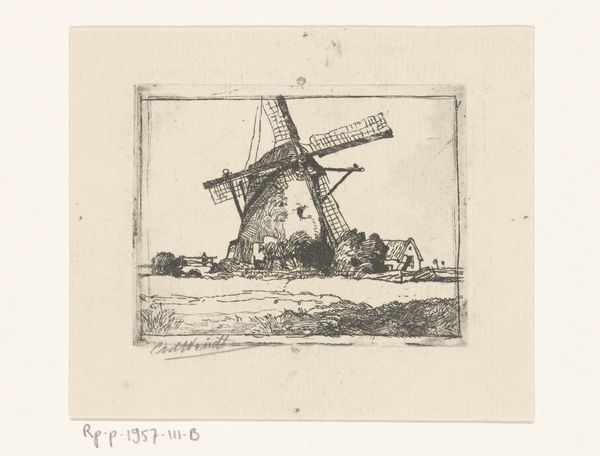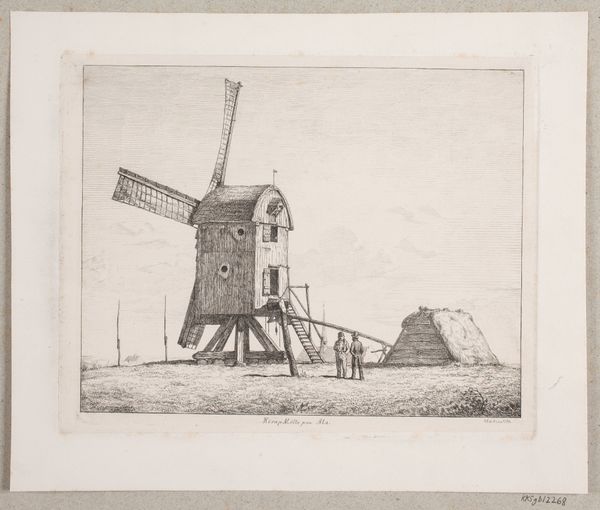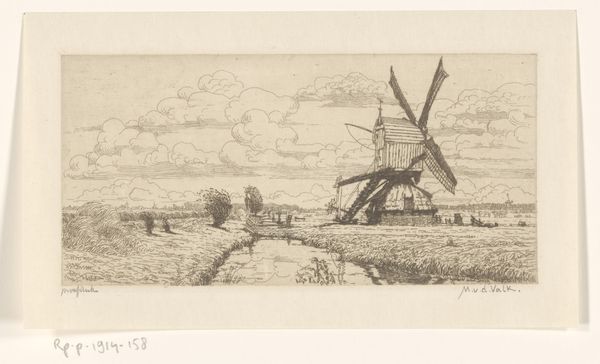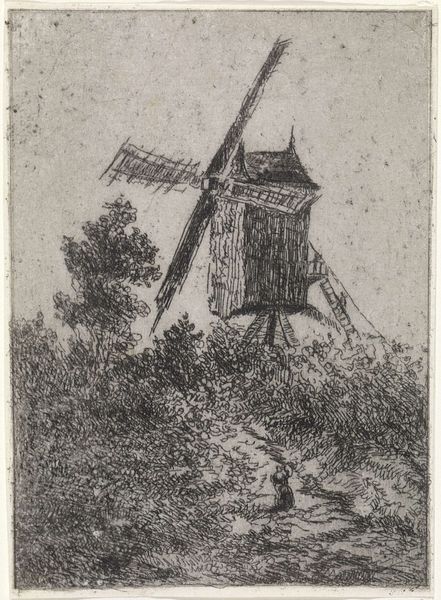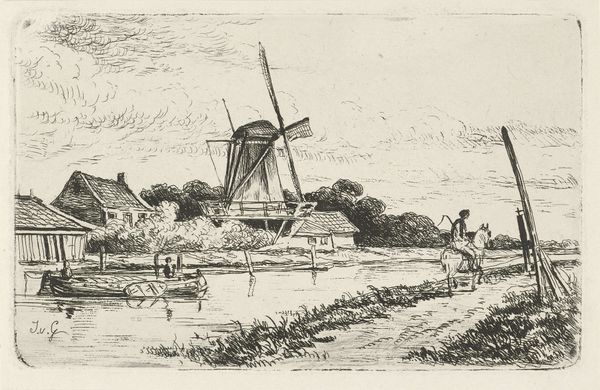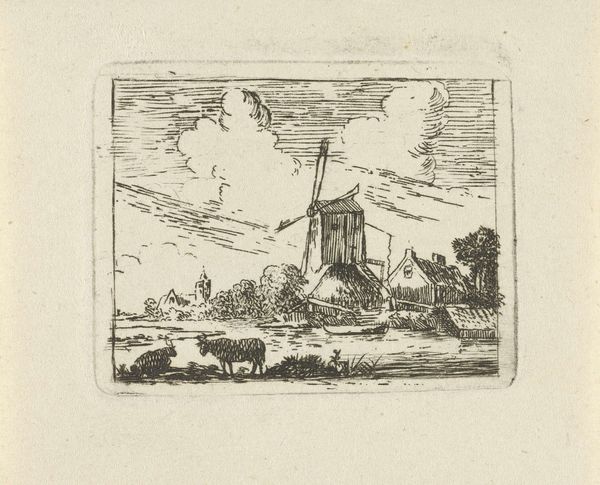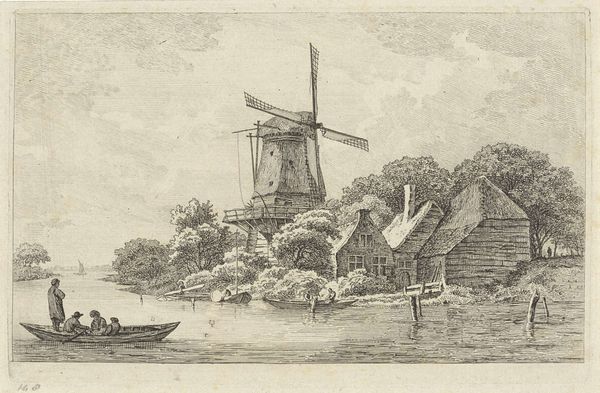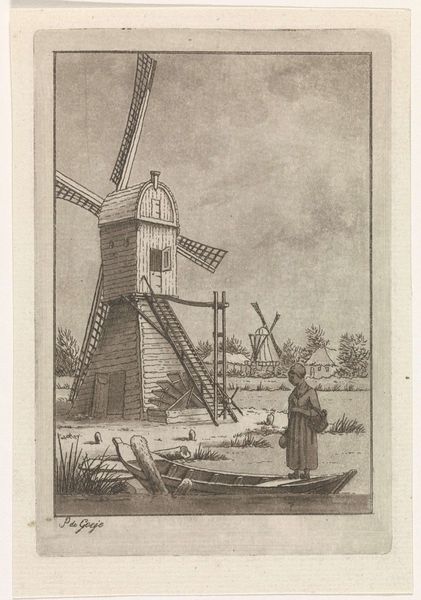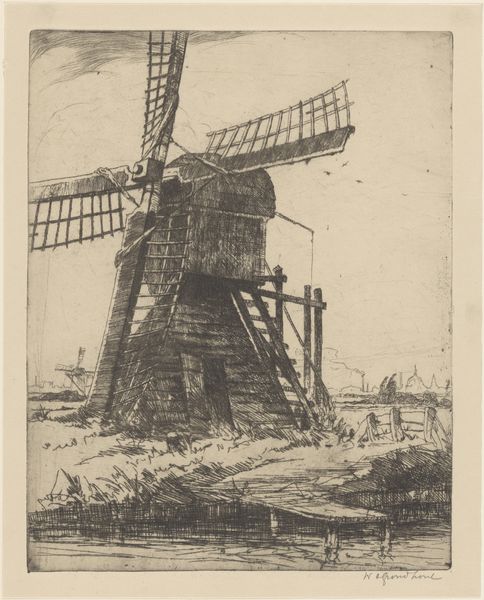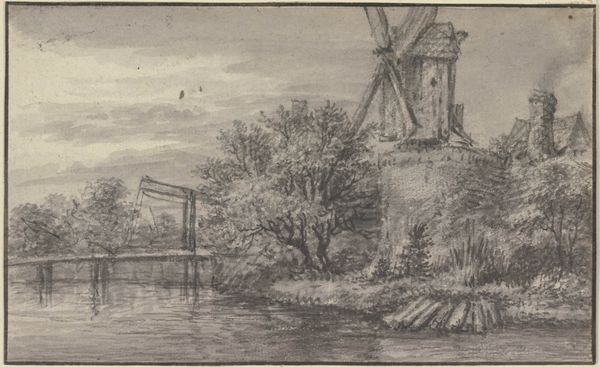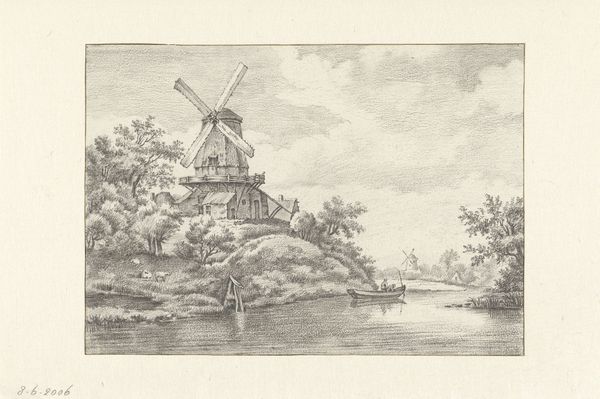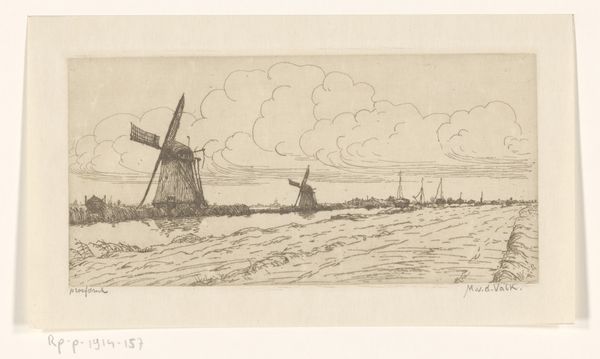
print, etching
#
dutch-golden-age
# print
#
etching
#
landscape
#
line
#
realism
Dimensions: height 50 mm, width 63 mm
Copyright: Rijks Museum: Open Domain
Curator: Standing before us is "Landscape with Windmill," an etching by Alexander Schaepkens, likely created sometime between 1830 and 1899. Editor: Oh, I love this! It’s like stepping back into a quieter time. So simple, but evocative. I immediately imagine the whoosh of the sails turning and the smell of the grass. Curator: Exactly! And you see how he used line? It’s so economical, isn’t it? You get a real sense of depth with such a minimalist approach. Consider that during this period, landscape art served as a mirror reflecting cultural values related to nature, progress, and the evolving industrial society of the Netherlands. Editor: True, it is deeply evocative of a changing world. It is charming to see the windmill almost celebrated here as a marker of that very shift in landscape! I wonder what it felt like back then, though? Seeing these huge structures pop up everywhere. This tiny image suddenly seems quite monumental. Curator: These windmills were the backbone of the Dutch economy and integral parts of the landscape, yet sometimes became objects of concern due to industrialization changing traditional lifestyles and threatening local autonomy. Prints like these democratized access to imagery; they brought slices of the Netherlands to people far and wide, influencing not only national identity but artistic expression as well. Editor: Like little postcards. So, this artwork could be seen as a commentary on industry AND landscape preservation perhaps? That it can both represent national pride and cultural anxiety is quite complex! Makes you consider how art creates such a cultural conversation, generation to generation. Curator: I completely agree. The social and political context imbues even what seems like a simple scene with depth. It is about more than nostalgia for the pre-industrial world. What begins with line on copperplate becomes part of the political, ideological, and artistic bloodstream of an era. Editor: It certainly gets you thinking! Like how technology changes not just the view outside the window but the view we hold inside ourselves. A beautiful paradox wrapped up in simple lines.
Comments
No comments
Be the first to comment and join the conversation on the ultimate creative platform.

